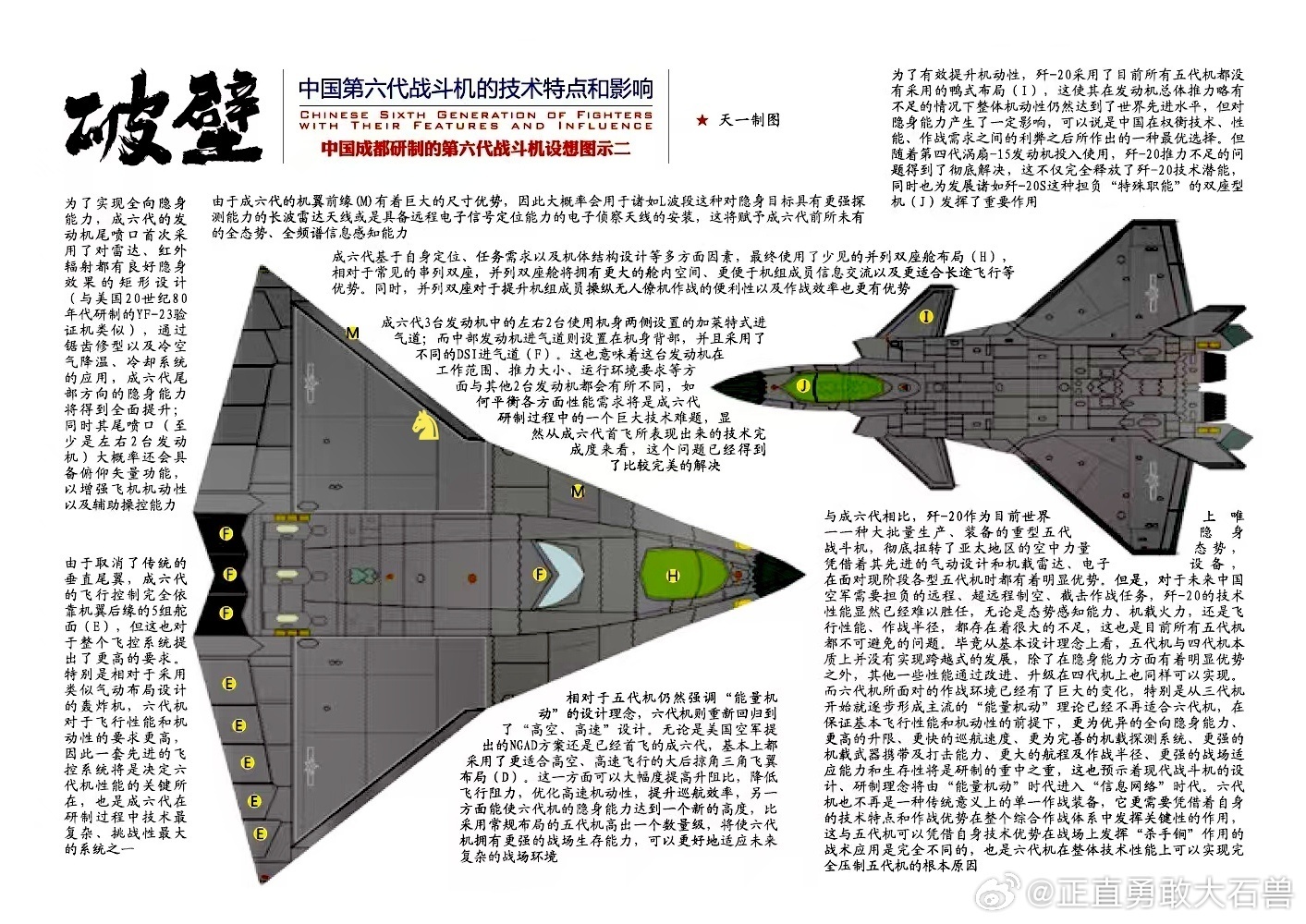How The J-36’s Development Progress Impacts Modern Air Combat Doctrine And Global Defense Competitiveness
China’s recent announcement that its sixth-generation fighter aircraft, the J-36, has completed its second successful flight marks a pivotal moment in the evolution of modern air combat capabilities. This achievement underscores China’s accelerating progress in advanced aerospace technology, positioning the J-36 as a potential game-changer in reshaping global airpower dynamics. As nations worldwide race to develop next-generation fighters, the J-36’s advancements signal a broader shift in military doctrine, prioritizing stealth, network-centric warfare, and multi-domain integration to dominate future battlefields.
The J-36’s development reflects a strategic emphasis on overcoming the limitations of fifth-generation fighters like the F-22 Raptor and J-20. Early reports suggest the aircraft incorporates cutting-edge innovations, including enhanced stealth capabilities through advanced radar-absorbent materials and aerodynamic shaping, which reduce its radar cross-section beyond current standards. Additionally, the integration of artificial intelligence (AI) for real-time decision-making and unmanned teaming capabilities—enabling collaboration with autonomous drones—positions the J-36 as a cornerstone of China’s vision for human-machine collaborative combat systems. Such features align with emerging doctrines emphasizing speed, adaptability, and the ability to operate in contested environments where traditional sensors and communications may be compromised.
This advancement not only elevates China’s defensive and offensive capabilities but also pressures rival nations to re-evaluate their own aerospace strategies. The J-36’s purported use of directed-energy weapons and hypersonic missile systems further complicates the threat landscape, challenging existing missile defense frameworks and shortening response timelines for adversaries. Modern air combat, increasingly defined by beyond-visual-range engagements and electronic warfare, demands platforms capable of surviving in highly contested airspace while coordinating with satellites, naval assets, and ground forces. The J-36’s development thus accelerates a global shift toward interconnected, multi-domain operations, where situational awareness and data fusion are as critical as firepower.
Another critical aspect of the J-36’s impact lies in its influence on global defense competitiveness. The United States, Russia, and European consortiums are concurrently advancing their sixth-generation programs—the Next-Generation Air Dominance (NGAD), Mikoyan LMFS, and Tempest/FCAS projects, respectively. China’s progress, however, introduces new urgency into this technological rivalry, particularly in the Indo-Pacific region, where air superiority could dictate regional security dynamics. Nations reliant on older-generation aircraft face mounting pressure to modernize their fleets or risk strategic obsolescence. Consequently, defense budgets are increasingly allocated toward AI research, hypersonic technology, and stealth innovation, reshaping defense industrial priorities worldwide.
Beyond military strategy, the J-36’s emergence highlights the growing role of economic and industrial capacity in sustaining defense competitiveness. China’s ability to rapidly prototype and test advanced systems—supported by a sprawling defense-industrial ecosystem—demonstrates its ambition to rival traditional aerospace powers. This dynamic could spur increased international collaboration among democracies seeking to counterbalance China’s rise, as seen in initiatives like AUKUS and the Global Combat Air Programme. At the same time, it risks exacerbating arms race tensions, as technological parity becomes synonymous with geopolitical influence.
In this evolving landscape, the J-36’s milestones serve as a reminder that air combat doctrine is no longer confined to aerial engagement alone. The fusion of cyber, space, and AI-driven systems into next-generation platforms redefines what it means to achieve air dominance. For global militaries, adapting to this paradigm requires not only technological investment but also doctrinal innovation, emphasizing agility and interoperability across domains. As the J-36 progresses toward operational deployment, its development will likely remain a barometer of China’s aerospace ambitions—and a catalyst for reimagining the future of airpower in an increasingly multipolar world.
Key Technological Advancements Tested During The J-36’s Latest Flight Prototype Demonstration
China’s sixth-generation fighter prototype, the J-36, recently completed its second successful flight test, marking a significant milestone in the nation’s pursuit of next-generation aerial combat capabilities. Conducted under tightly controlled conditions, this demonstration focused on evaluating cutting-edge technologies designed to redefine air superiority in future battlespaces. The flight provided critical insights into the aircraft’s advanced systems, underscoring China’s strategic push to align with—and potentially surpass—global competitors in sixth-generation fighter development.
Among the most notable advancements tested during the flight was the prototype’s adaptive cycle engine, a propulsion system that dynamically adjusts its operational parameters to optimize performance across varying speeds and altitudes. This technology represents a leap forward from traditional turbofan engines, enabling seamless transitions between high-thrust supersonic maneuvers and fuel-efficient subsonic cruising. Initial data from the test suggests improved thermal management and reduced infrared signatures, which are critical for evading detection. The engine’s efficiency could significantly extend the aircraft’s operational range and loiter time, enhancing its utility in both offensive and defensive roles.
Another critical area of focus was the J-36’s stealth capabilities, which reportedly integrate next-generation materials and aerodynamic refinements to minimize radar cross-section (RCS) and heat emissions. The prototype’s airframe features serrated edges, conformal antennas, and radar-absorbent composite materials, all aimed at defeating advanced enemy sensors operating across multiple spectral bands. During the flight, engineers closely monitored how these design elements performed under real-world conditions, particularly during high-agility maneuvers that typically exacerbate detectability. Early analysis indicates progress in mitigating vulnerabilities associated with traditional stealth platforms, such as lateral radar returns and engine exhaust signatures.
Equally significant were trials of the aircraft’s artificial intelligence (AI)-driven avionics suite. The system is designed to assist pilots in threat assessment, tactical decision-making, and even autonomous operations in communications-denied environments. By processing inputs from electro-optical, infrared, and radio-frequency sensors in real time, the AI allegedly identified simulated threats and proposed countermeasures faster than human operators alone could achieve. This capability was further augmented by advancements in sensor fusion, which synthesizes data from onboard systems, off-board platforms, and satellite networks to create a unified, real-time battlespace picture—a cornerstone of modern networked warfare.
Perhaps the most groundbreaking test involved directed energy weapons (DEWs), with initial reports suggesting the J-36 may have trialed a high-energy laser or microwave system for countering incoming missiles. While technical hurdles such as power generation and beam stability remain, integrating DEWs into a tactical aircraft could revolutionize missile defense, offering near-infinite ammunition and ultra-precise engagement compared to conventional countermeasures. Though details remain classified, the flight likely assessed the operational viability of these systems under dynamic flight stresses.
Underpinning these advancements is the J-36’s progress in achieving multi-domain compatibility as part of a broader networked force. The prototype demonstrated robust data-linking capabilities, enabling secure communication with ground stations, naval assets, and other aircraft to coordinate complex missions. This integration aligns with China’s focus on “system-of-systems” warfare, where individual platforms function as nodes within a synchronized combat network.
These tests collectively highlight China’s accelerating progress in sixth-generation fighter development. While challenges in scaling prototypes and achieving full operational capability persist, the J-36’s latest flight underscores Beijing’s ambition to establish technological parity with global peers. As the program advances, it may not only reshape regional security dynamics but also influence the strategic calculus of nations racing to define the future of air combat.
The Strategic Significance Of China’s J-36 Sixth-Gen Fighter Successfully Completing Its Second Flight
China’s recent successful completion of the second test flight of its J-36 sixth-generation fighter jet marks a pivotal milestone in the nation’s quest to modernize its aerial combat capabilities and assert itself as a global leader in military aviation. As the latest iteration in a series of advanced combat aircraft developed by the People’s Liberation Army Air Force (PLAAF), the J-36 epitomizes Beijing’s strategic ambition to achieve technological parity—and eventual superiority—over its rivals. This achievement underscores China’s accelerating progress in closing the gap with established aerospace powers like the United States and Russia, while signaling a broader shift in the balance of airpower dynamics across the Indo-Pacific and beyond.
The J-36’s development aligns with the defining characteristics of sixth-generation fighter technology, which emphasize stealth, artificial intelligence (AI)-enabled systems, hypersonic propulsion, and network-centric warfare capabilities. Early reports suggest the aircraft integrates cutting-edge features such as advanced sensor fusion, directed-energy weapons, and the ability to operate alongside unmanned loyal wingman drones. Such innovations position the J-36 not merely as a dogfighting platform but as a node within a larger, AI-driven battle management ecosystem. This capability could enable China to project power more effectively in contested environments, such as over the South China Sea or near Taiwan, where overcoming sophisticated air defense systems is critical. By minimizing radar cross-sections and maximizing data-sharing across platforms, the J-36 enhances the PLAAF’s capacity to conduct multi-domain operations, complicating adversaries’ efforts to track, target, and counter Chinese forces.
The strategic implications of this technological leap extend beyond raw military capability. The J-36’s progress reflects China’s broader commitment to reducing reliance on foreign aerospace technology, a priority reinforced by U.S.-led export controls and semiconductor restrictions. Indigenous breakthroughs in engine design, radar systems, and avionics underscore the success of Beijing’s dual civil-military fusion strategy, which leverages state-funded research and commercial innovation to advance defense objectives. Moreover, the fighter’s development timeline—reportedly accelerated compared to previous projects—suggests an increasing mastery of rapid prototyping and iterative testing, hallmarks of a maturing defense-industrial ecosystem.
Geopolitically, the J-36’s advancements are poised to alter regional security calculations. Nations such as Japan, India, and Australia, already investing in fifth-generation platforms like the F-35, may face heightened pressure to accelerate their own sixth-generation programs or deepen alliances to counterbalance China’s growing prowess. Meanwhile, Russia, long a supplier of advanced fighters to China, now risks being eclipsed by its partner’s homegrown innovations—a dynamic that could reshape their defense cooperation. For the U.S., the J-36’s progress underscores the urgency of advancing its Next Generation Air Dominance (NGAD) program, which remains shrouded in secrecy but is widely seen as a direct response to China’s escalating capabilities. The emerging U.S.-China rivalry in sixth-generation technology risks fueling an arms race, with both nations prioritizing speed, stealth, and AI integration to secure future air supremacy.
Yet challenges remain for China’s J-36 program. Scaling production, ensuring system reliability, and integrating the fighter into existing command structures will require sustained investment and technical refinement. Additionally, international observers have questioned whether China can sustain its innovation momentum amid ongoing economic headwinds and bureaucratic inefficiencies. Nevertheless, the successful second flight demonstrates Beijing’s resolve to pursue military modernization as a cornerstone of its strategy to challenge U.S. hegemony and assert itself as a preeminent global power. As sixth-generation fighters redefine the future of aerial warfare, the J-36 stands as both a symbol of China’s ascendance and a catalyst for a new era of strategic competition.

